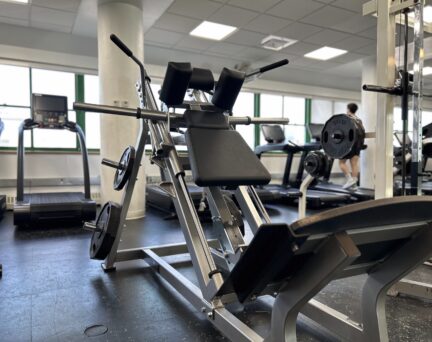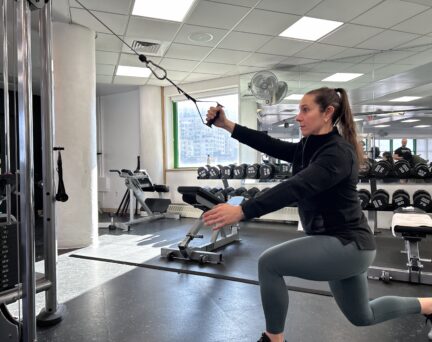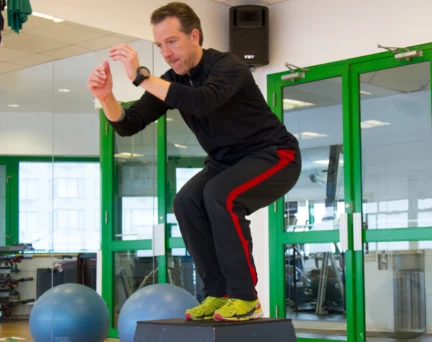The Beginner's Guide to the Open Trap Bar
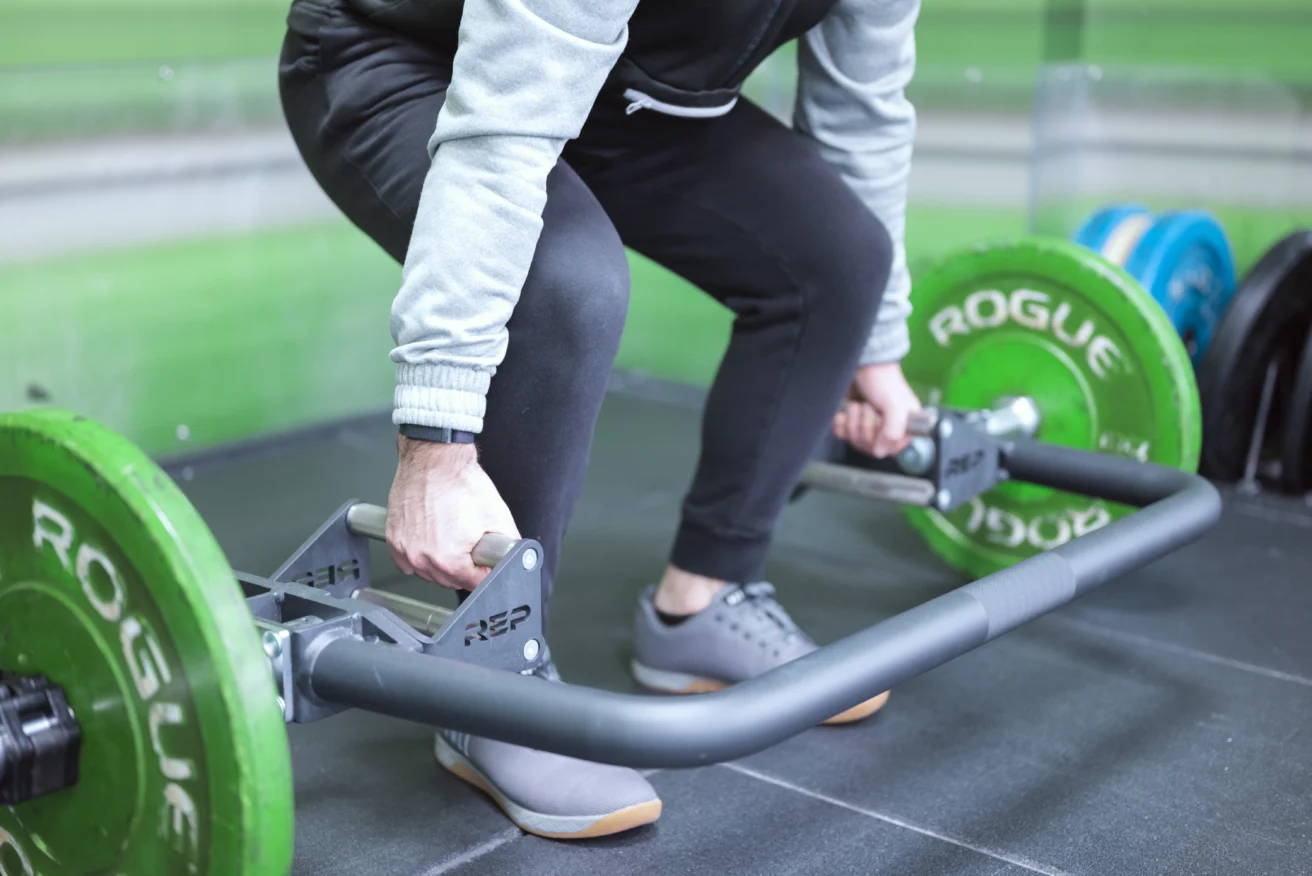
Deadlifts are a powerhouse lower body exercise. They hit the glutes, hamstrings, and lower back all in a single movement. Activating these large lower-body muscles makes them a highly effective functional strength-training exercise. They can be particularly effective for athletes who need to develop explosiveness and power, such as sprinters, football players, and basketball players, but they are equally advantageous for the average gym-goer.

Deadlifts with a traditional barbell can be difficult for beginners, and without proper attention to form, they can put strain on the lower back which can lead to injury. If you’re looking to add some variety to your deadlifts, or if you’re new to deadlifting, consider incorporating the open trap bar into your training.
All trap barbells allow you to perform deadlifts while keeping your center of gravity within the frame of the bar. The open trap bar does away with one side of the frame of a traditional trap bar, making it much easier to use. The open trap bar lets the user easily step in and out of the bar and doesn’t limit the range of lower-body motion like closed trap bars do. The shape of the barbell also provides an excellent counterweight, keeping the user balanced while they’re deadlifting.
The easy grip handles also make the open trap bar easier to manipulate and make the exercise much more comfortable than with a traditional barbell. This all reduces the stress on your lower back, allowing you to perform exercises with proper form and to lift heavier weights than with traditional barbell deadlifts. It’s also good for people with mobility issues or pain in their lower back – though you should always consult a healthcare professional before trying a new exercise.
How to Load the Right Weight
The open trap bar doesn’t require any adjustment beyond choosing the right amount of weight. Choose carefully! Too much weight can be dangerous, while too little won’t get you the results you want. It’s crucial to maintain proper form when deadlifting. You’re working large muscles so it’s possible to lift a large amount of weight, which can put stress on your spine and lower body joints and lead to serious injury.
All deadlifts are form-intensive exercises, and while the open trap bar can make them slightly easier, it’s always best to work with a trainer to perfect your form. No online blog or video can ever be a substitute for in-person advice from an expert. If you’re planning to use the open trap bar in our gym, you can book a session with one of our personal trainers who will show you the ropes.
When you’re just starting out, don’t focus on lifting the heaviest weight you can. When in doubt, start low – the open trap bar by itself weighs almost 70 pounds and for some people that’s enough. If you’re not feeling challenged, add 10-pound plates to each side to increase the weight slowly, don’t rush to overload yourself.
The open trap bar makes loading extra plates easy. Just flip it so that the curved part of the bar is facing the ceiling. This will make it much easier to slide the weight plates onto each side. Whatever amount of weight you’re using, make sure that it’s evenly balanced on either side of the bar.

If you’re already an experienced conventional or sumo deadlifter, our trainers recommend reducing the weight you normally lift until you have one or two sessions under your belt. The trap bar offers a slightly different weight distribution and body position that you will need to adjust to.
How to Deadlift with the Open Trap Bar
Regardless of your level of comfort with conventional deadlifts, you should start with no extra weight on the bar to get a feel for the form you’ll be using. Step into the curved section of the barbell with the frame behind you. Keep your feet parallel, shoulder-width apart, and with your toes pointing forward.
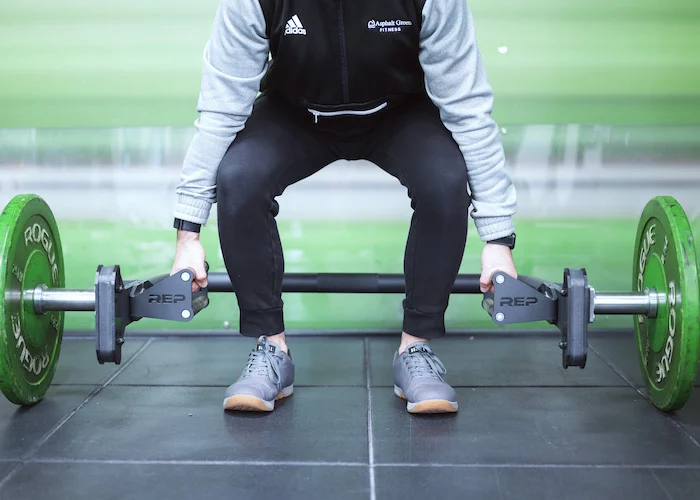
As you reach down to grab the bar by the handles, hinge at your hips and push your butt back, keeping your chest in line vertically with your knees. With your arms extended, grasp the handles tightly on either side. Keep your back straight, brace with your core, and drive through your feet to lift the weight as you stand up. Your legs should be doing most of the work here with your arms, back, and core only engaged for stability.

Stand up in one controlled motion, straightening your knees and hips. At the end of the movement, you should finish standing up straight, with your hips and knees fully extended and your shoulders in line with your feet. Then lower your body back down to the starting position like before and repeat!

Be sure to keep your chest in line with your knees throughout the exercise, and pay close attention to keeping your back flat and your spine straight. Don’t bend your spine forward at the beginning of the exercise since this will transfer the weight from your back muscles to your quads and put tension on your joints.
At the end of the motion, be careful not to bend your spine backwards. Hyperextending the spine can cause serious injury. Pay close attention to form throughout the exercise, and stop or reduce the weight if you notice that your form is slipping even a little. You’re simply not going to get results from deadlifting with poor form, and it can be dangerous!
Bonus:
Another benefit to the open trap bar is that you can vary your deadlifts. If you want to really activate your quads and core, you can flip the curved part of the bar in front of you and perform the deadlifts that way. This will let you use the lower handles and will put more emphasis on working out the front side of your body rather than the back.
What’s a Good Workout?
The open trap bar can be a great addition to your existing workout routine or used to create a new one. Here’s a sample workout you can try using the open trap bar:
Warm-up: 5-10 minutes of dynamic stretching and light cardio
Deadlifts: 3 sets of 8-12 reps
Leg Press Machine: 3 sets of 8-12 reps
Leg Extension Machine: 5 sets of 10 reps
Cool-down: 5-10 minutes of static stretching
Remember to always listen to your body and adjust the workout to fit your needs and abilities. With consistent training, the open trap bar can help you achieve your fitness goals and improve your overall physical health.
